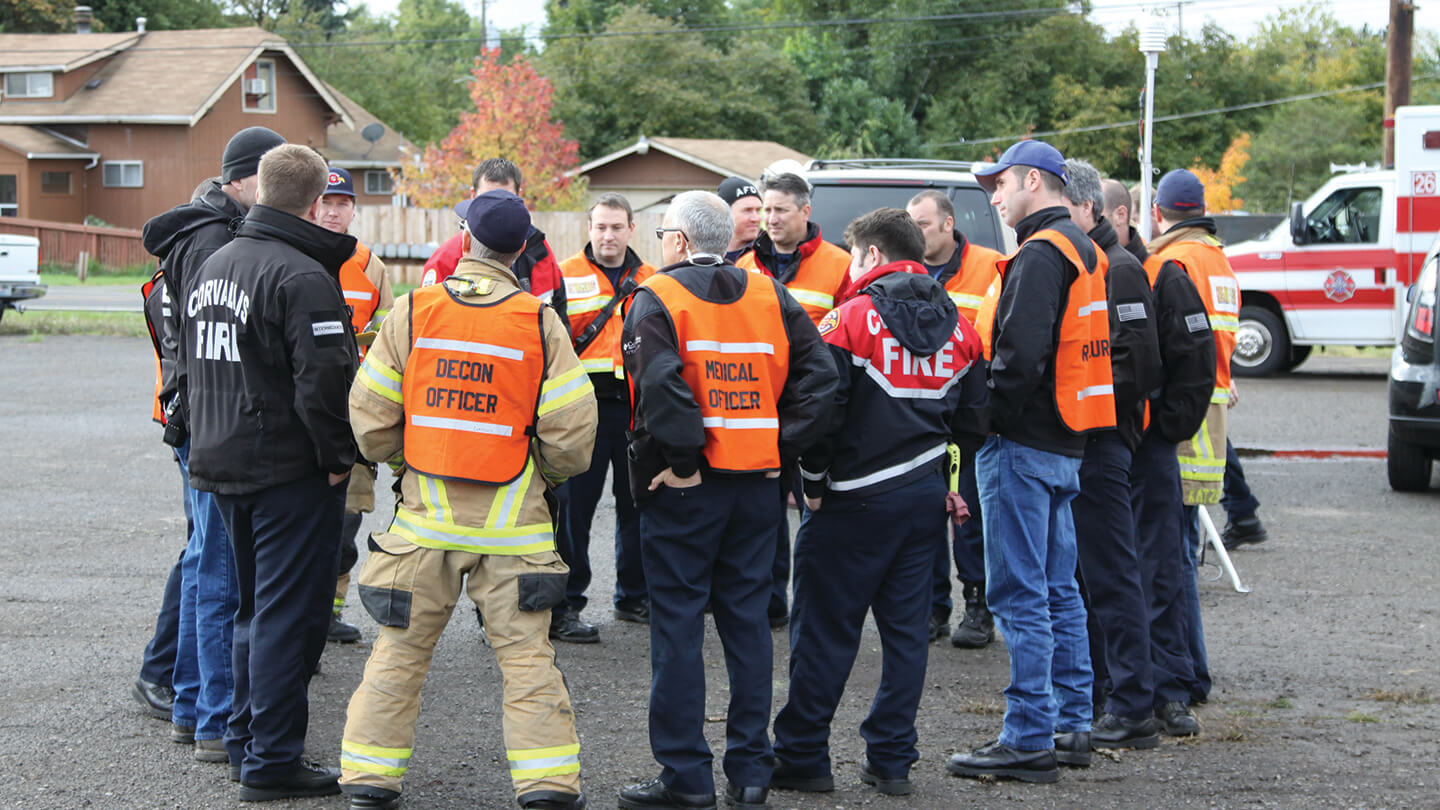What is a Continuity of Operations Plan?
A Continuity of Operations Plan (COOP) is a strategic blueprint that outlines how an organization will sustain its essential functions during and after a disaster. Its primary goal is to minimize disruptions to critical services, reduce the disaster’s impact, and enable a swift recovery. This plan is a key component of an organization’s overall disaster recovery strategy and is important for maintaining operational resilience in the face of various threats.
Summary of a COOP
- Strategic Framework: A COOP offers a comprehensive approach to maintaining essential functions during and after a disaster. It lays out clear procedures and protocols to ensure that the organization can continue operating, even when normal conditions are disrupted. By defining critical functions, identifying key personnel, and establishing communication channels, a COOP provides a detailed roadmap for navigating through crises.
- Disaster Resilience: The plan focuses on maintaining the operational availability of critical services, regardless of the circumstances. Whether dealing with natural disasters, technological failures, or human-made crises, the COOP is designed to keep essential operations running. This resilience is crucial for organizations that provide vital services, such as government agencies, healthcare providers, and utilities, where interruptions can have far-reaching consequences.
- All-Hazards Approach: COOPs are crafted to address a broad spectrum of potential disruptions, from natural disasters like hurricanes and earthquakes to cyberattacks and infrastructure failures. By adopting an all-hazards approach, a COOP ensures preparedness for various scenarios, allowing organizations to respond effectively no matter the nature of the threat.
The Importance of COOP in Disaster Recovery
In disaster recovery, a COOP is more than just a plan. A COOP is the lifeline that helps organizations continue to function when normal operations are disrupted. The importance of having a COOP in place cannot be overstated, as it directly impacts an organization’s ability to recover from a disaster and maintain public trust.
Key Benefits of COOP in Disaster Recovery
- Minimized Disruption: A well-developed COOP helps minimize the disruption to essential services, ensuring that critical operations continue during a disaster.
- Swift Recovery: By having predefined procedures and backup systems in place, organizations can recover more quickly and efficiently after a disaster.
- Protection of Resources: A COOP includes strategies for safeguarding vital resources, such as personnel, data, and infrastructure, reducing the long-term impact of the disaster.
- Maintained Public Trust: When organizations can maintain critical services during a disaster, they reinforce public confidence and trust in their ability to manage emergencies.
Components of a Continuity of Operations Plan
A COOP is a comprehensive document that encompasses various elements necessary for continuity during a disaster. The following components should be included when developing a robust COOP:
Essential Functions Identification

The first step in creating a COOP is identifying the organization’s essential functions. These are the critical services and operations that must continue during a disaster to facilitate the organization’s survival and the well-being of its stakeholders.
Steps for Identifying Essential Functions
- List All Functions: Begin by listing all functions performed by the organization.
- Prioritize Functions: Determine which functions are essential for maintaining operations and which can be temporarily suspended.
- Assess Dependencies: Identify any dependencies, such as suppliers or technology systems, that enable essential functions.
Orders of Succession and Delegation of Authority

A COOP should outline the orders of succession and delegation of authority so that leadership and decision-making continue seamlessly during a disaster. This includes designating individuals who will take on key roles if primary personnel are unavailable.
Key Considerations for Succession and Authority
- Clear Succession Lines: Establish a clear line of succession for key leadership positions to allow for continuity.
- Delegation of Authority: Define the authority that can be delegated to subordinates to make critical decisions during a disaster.
- Documentation: Ensure that all orders of succession and delegations of authority are documented and communicated to relevant personnel.
Continuity Facilities and Communication Systems

A COOP should include provisions for continuity facilities and communication systems. These are alternative locations and systems that can be used to maintain operations if primary facilities and communication channels are compromised.
Continuity Facilities and Communication Strategies
- Alternate Facilities: Identify and equip alternate facilities where essential functions can be performed if the primary location is unusable.
- Mobile Operations: Consider mobile units or temporary setups that can be quickly deployed to maintain operations.
- Communication Systems: Outline how backup communication systems will be placed in the event of an emergency to maintain contact with employees, stakeholders, and the public and avoid disaster response delays.
Vital Records and Database Management

Protecting vital records and databases is another aspect to take into account in a COOP. This includes planning to back up all important documents, data, and systems in case they need to be quickly restored if compromised.
Steps for Vital Records and Database Protection
- Identify Vital Records: Determine which records and databases are essential for maintaining operations and legal compliance.
- Backup Procedures: Implement regular backup procedures, including off-site storage and cloud-based solutions.
- Access and Recovery: Make sure vital records can be accessed and restored quickly in the event of a disaster.
Testing, Training, and Exercises

A COOP is only effective if it is regularly tested, and personnel are trained on its procedures. Regular exercises help identify gaps in the plan and ensure that everyone knows their roles during a disaster.
Importance of Testing and Training
- Regular Exercises: Conduct regular drills and exercises to test the effectiveness of the COOP and identify areas for improvement.
- Personnel Training: Provide comprehensive training to ensure all employees understand their responsibilities within the COOP.
- Plan Updates: Use the results of exercises to update and refine the COOP, keeping it relevant and effective.
Real-Life Success Stories of COOP Implementation
Organizations that have effectively implemented COOPs have demonstrated resilience during disasters, minimizing disruption and maintaining critical services. Some examples of this are:
- Hurricane Response: When Hurricane Sandy struck the northeastern United States in 2012, many government agencies activated their COOPs to maintain essential services. In this example, the Federal Emergency Management Agency (FEMA) utilized its COOP to facilitate continuity of operations, including disaster response coordination and resource distribution, despite the widespread impact of the storm. FEMA’s proactive approach allowed them to maintain communication with local and state agencies, mobilize emergency personnel, and allocate supplies where they were most needed. By implementing the COOP, FEMA was able to safeguard the integrity of its operations.
- Pandemic Response: The COVID-19 pandemic highlighted the importance of COOPs, as many organizations activated their plans to transition to remote work, maintain communication, and ensure continuity of essential services.
- Hurricane Response: During Hurricane Harvey in 2017, many organizations in Texas activated their COOPs to maintain essential functions despite widespread flooding and infrastructure damage.
Maintaining Critical Functions After a Disaster

A Continuity of Operations Plan (COOP) is an essential component of any organization’s disaster recovery strategy. By having a plan in place to help critical functions continue during and after a disaster, a COOP helps organizations maintain resilience, protect resources, and recover more quickly.
As the frequency and severity of disasters continue to increase, the importance of having a well-developed COOP in place cannot be overstated. Reach out now for more information on how Tidal Basin can assist with COOP development and other emergency management initiatives.



